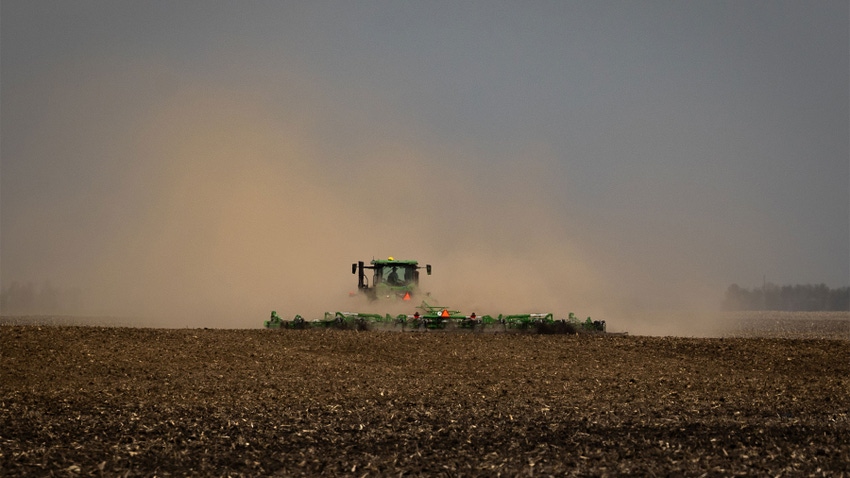April 26, 2024

Last year’s dust storm along Interstate 55 near Springfield, Ill., left several people dead in a horrific accident. Just last week, Interstate 72 west of Springfield was shut down due to blowing dust.
As planters roll through the Illinois countryside, windy days and dusty fields appear to be the new norm — but are they? Prairie Farmer sat down with Trent Ford, Illinois state climatologist, for answers.
What conditions produce wind? March, April, September, October and November are typically our windiest months of the year. Lately, the jet stream has been active over North America. South of us is heating up quickly, while north of us is still cold. The clash of air mass on a continental scale creates dynamic weather this time of the year. It also is why we have peak severe weather between April and June in the transition season.
Is it windier than normal this year? In all corners of the state, from rural southern Illinois to downtown Chicago, we are hearing the same thing — people think it’s getting windier. It has been quite windy the last several weeks, but not substantially windier than other years. From weather station data, I can’t say there’s any evidence showing Illinois is getting windier than past years.
Has there been a long-term trend toward windier years? The answer is less satisfying, but interesting, nonetheless. If you pull wind speed records from weather stations from the 1940s, we don’t see an increase. However, wind is finicky, and calculating wind is a challenge. For one, where are the stations located? We’ve been taking wind measurements at O’Hare since the 1940s, but development around the airport looks substantially different than it did 80 years ago.
What conditions produced the 2023 I-55 dust storm? From everything we could tell, it was a very dry start to April that ended warm and zapped the topsoil of moisture. There was about 4 inches of very workable topsoil, and it made for ideal field conditions. Temperatures cooled down in late April, delaying some folks and causing others to replant. In the last few days of April, people were really pushing fieldwork. Then we had a couple of days in a row with very strong winds — nothing record breaking, but still windy.
It was a very windy afternoon, with a lot of very dry soil at the top, and a lot of fieldwork going on. Significant blowing dust happened to align across a very busy interstate, causing a very tragic incident.
Are dust storms becoming more common? Dust storms aren’t as clearly defined as, say, a hurricane is, and it’s not something that there’s been great historical record-keeping on. We’ve tried to pull visibility records from National Weather Service stations over the past century but have found big gaps since visibility could be affected by dust or fire smoke or fog.
We did find several dust storms in the 1950s, very few in the 1960s and 1970s, several in the 1980s — especially in 1984, then several in the 2000s — especially 2008 and 2017, then some in the last several years.
Are there times or areas of the state where blowing dust is more of a problem? We do have a consistent theme that most documented dust storms occurred between April and June with windier conditions and increased fieldwork.
There seems to be the most frequent occurrence around the broad area that we saw last year’s I-55 dust storm. The slice of the state with the highest frequency of dust storms is the Metro East up to Springfield and Jacksonville, over to Decatur, down to Taylorville. The high level of agricultural activity, flat landscape and major transportation roadways equates to many reported dust storms.
What advice do you have for farmers to avoid dust storms? Dust storms are something that will continue to happen in the future. If we do run into a similar situation where the topsoil is dry and it’s supposed to be windy, be conscious of blowing dust. If you’re farming near a major thoroughfare, be very cognizant of where dust is flying.
Unfortunately, dust storms are a hazard where conditions can change quickly, and it doesn’t take much to have a serious problem. Dust storms are challenging to predict, so managing the risk to reduce those conditions is important.
Read more about:
WeatherAbout the Author(s)
You May Also Like






